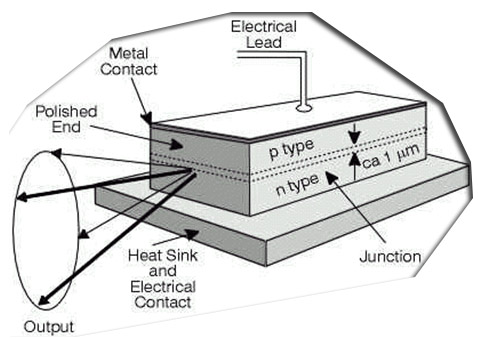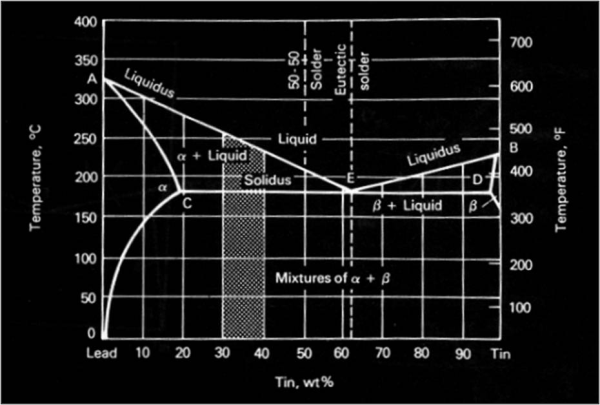Eutectic Bonding - Why is it Necessary?
This Eutectic Bond consists of three key aspects:
- The Electrical Contact
- The Primary Heat Interface
- The Mechanical Support

Quick SCIENCE LESSON: The Law of Thermodymanics
- Energy can neither be created nor destroyed (you can't win!)
- Energy flows from a higher energy state to a lower energy state (hot or cold) **in the event of a tie, mother nature wins!
Eutectic Bonding - What Does It Prevent?
Catastrophic Optical Damage (COD): damage to the mirror coating reflects energy back in to the laser and overheats over time
Reduced Device Longevity: poor thermal interface will require higher current input for desired light output
"Noise" Feedback: adhesive bonds provide noisy feedback at data rates > 40 Gps
Eutectic definition: Easily Melted
*Point "E" is the mixture point where heating the solder results in pure solid to pure liquid transition 
How to Join with Solder: 2 Things Needed
HEAT and WETTING: 1) Need sufficient heat to melt and reflow the solder and 2) Don't want excessive heat that will damage the components OR the surrounding components.
Wetting vs. Non-Wetting
Solder droplet contact angle "0" affects wetting.

It's important to keep in mind some of the process variables with eutectic bonding. Palomar Technologies' eutectic process can control the following:
- Temperature
- Time
- Force scrub
- Gas environment
Other variables, not controlled with Palomar's process:
- Die material
- Solder material
- Solder size
- Solder presentation method
- Substrate/bond pad material
- Cleaning methods
Learn more:
Download the "Automated Eutectic Die Attach" eBook: 